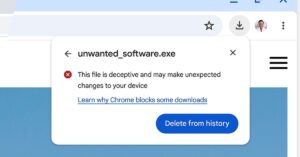/cdn.vox-cdn.com/uploads/chorus_asset/file/23988538/acastro_STK060_slack_04.jpg)
The best thing about Slack’s new Canvas feature is that I barely need to explain it to you. It’s like Google Docs but inside of Slack. Make a canvas, add some stuff, and share it with whoever you want. Every channel in your Slack now has a canvas attached to it, and you can also make and share as many as you want. That’s it!
Slack first announced Canvas last year, and it’s starting to roll out to all Slack users today. I’ve been testing an early version over the last few days, and they’re definitely going to be one of my more-used Slack features going forward. They’re maybe the most useful organizational tool Slack has ever created.
See, the problem with Slack is that it’s chaos. Since it’s primarily a messaging app, everything that happens in Slack happens in a chat. Chats move fast, and they resist organization; even if you’re ruthless about forcing people to thread everything, you’re going to end up with a million threads that start with things like “Question, will thread details” and “Okay, so I was thinking.” Slack wants to be a repository for all your company’s information, documents, data, and workflows — and is actually quite useful for many of those things! — but requires way too much scrolling and searching to find the things you were looking for.
One way to think of Canvas is just as collections of Slack objects. You can type text into them, but you can also upload photos and videos, embed Slack apps, add links, run polls, and all the other things you’d do in a message. Links can show up as nice cards, YouTube videos will play inline, and all of Slack’s rich links and media show up in canvases, too. Really, anything you can do in Slack, you can do in a canvas, but now those things are stored in a document that you can find and organize much more easily. (Yes, you can embed a canvas within a canvas. Canvas-ception.) And if your company is deep enough into Slack that you have buttons to file bug reports and multi-step workflows you can invoke with a slash command, those all work inside a canvas, too.
One way to think of Canvas is just as collections of Slack objects
But even though it’s technically a collaborative tool for document creation, Canvas isn’t really a competitor to Google Docs. It’s also not a particularly sophisticated editing tool, for one: you can make lists and headings, but you otherwise don’t have much control over how text looks. Multiple people can work on a canvas at once, but Google Docs handles multiple cursors and overlapping edits much better.
“Google Docs 100 percent still has a place in our universe,” says Ali Rayl, the SVP of product at Slack. In early testing, she’s seen Canvas occupy a different space. “The first thing we’re seeing is that it is in Slack, and there is something about having this kind of flexible space in the product already.” It may not be the most powerful text editor on earth, but there’s probably no faster way to send an onboarding document or style guide to a bunch of your colleagues.
There’s something to that logic: I’ve found myself using Huddles, Slack’s in-app voice and video chat, more often than I thought simply because it’s right there. Starting a huddle feels like a quick call rather than dramatically dropping a Zoom link into a conversation. And if I’m pulling together a mood board of links and images to share with the team, a canvas is probably the least complicated way to do so.
Because it’s Slack, canvases handle sharing and permissions really well — much better than Google Docs. When you make a new canvas, you can share it with anyone in your organization or share it with a channel, and everyone in the channel will have access. There’s no public sharing, though, so you’re limited to the people who also have access to your Slack. (For most documents, this is probably a good thing.) All the comments on a canvas live in a dedicated Slack thread, which itself is searchable just like anything else in Slack. If you mention someone in a canvas but they’re not yet shared, their name shows up with a gray background; share it with them and it turns blue.
Over time, Slack seems to see canvases turning into freeform collaborative workspaces, similar to both Google Docs and whiteboard apps like Miro. More immediately, though, they’re a huge upgrade on the pins and bookmarks that Slack has relied on for too long. The per-channel canvases are likely to be a big hit for that purpose alone. “We have wanted this surface in our products since day one,” Rayl says. “Pins and bookmarks were like, ‘We’ll do this for now until we build that surface.’” Pins and bookmarks aren’t going away yet, but Rayl hinted that they may not stick around forever.
Slack looks like a messaging app and acts like a messaging app, but it has never really been just a messaging app. Looking too much like one has made it harder to use Slack as a persistent place to store information. Canvases won’t take over your document workflows anytime soon, but they look like a great place to put stuff that you’ll be able to find again. It makes Slack make more sense. I’m already unpinning everything I can find.





